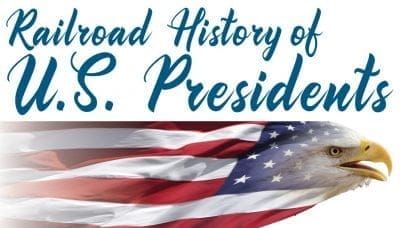
The images are iconic.
The final car of a train has come to rest at a station and hundreds, possibly thousands have descended upon the platform to hear a speech that could be a presidential candidate’s only opportunity to plead their case for a cause, an argument or campaign. Red, white and blue bunting, along with those semi-circles with the stars-and-stripes called pleated fans, set the tone. A fiery speech, a rally to action, a plea for a vote emerges as the order of the day.
The candidate may never step off the train. But the hope is that the message delivered is enough to carry that county when the electorate assembled at the station heads to the polls to engage in the most sacred of civic duties, the casting of a ballot.
There was no 24-hour news cycle, no talking heads on television, no endless barrage of polling or televised debates. Presidential candidates working the whistle stop had one shot at making their case before the next whistle blew. When that locomotive was fired up, the entire operation moved on to the next stop down the line, where this ritual would be repeated, start-to-finish.
The tradition that binds presidents with the railroad comes into sharp focus in New York, from which multiple U.S. presidents have hailed.
Commanders-in-chief from the Empire State include Martin Van Buren, Millard Fillmore, Theodore Roosevelt, Franklin D. Roosevelt and Donald Trump. And the communities these men called home all lie, today, within reach of Amtrak’s New York State corridor.
Theodore Roosevelt and Trump came from New York City. FDR was born, lived and is buried in Hyde Park, which sits between the Poughkeepsie (POU) and Rhinecliff-Kingston (RHI) stations. The Martin Van Buren National Historic Site is in Kinderhook, less than 13 miles from the Hudson Amtrak station. The Millard Fillmore House is in the Buffalo suburb of East Aurora, less than 20 miles from the Buffalo Exchange Street (BFX) Amtrak Station.
This week and month, during which the U.S. honors two presidents who left an impact on the nation like no other, seems a fitting moment to recall the pivotal role that America’s railroad has played in the U.S. presidency. In the wake of a presidential election that divided the nation like no other, the rails that crisscross the country today remind us of a time when right and left were less political terms than options at the switch that sat around the next bend in the track.
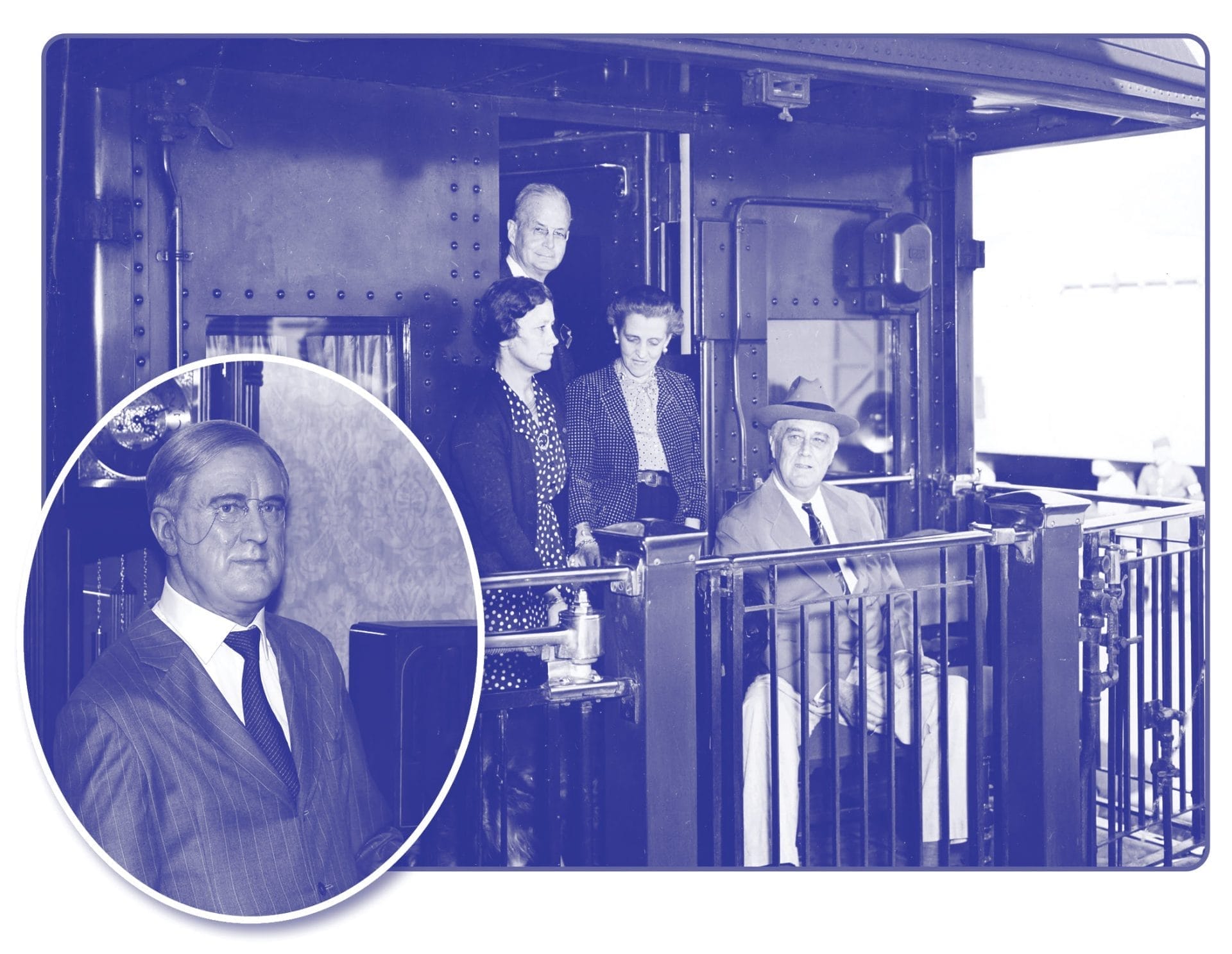
President Franklin D. Roosevelt, whose Hudson Valley, New York estate, home and library sit between the Poughkeepsie Train Station (POU) and Rhinecliff-Kingston (RHI) Amtrak station, traveled nearly 250,000 miles on 399 rail trips during his time as the nation’s 32nd commander-in-chief. According to the National Park Service, FDR during World War II consented to the wishes of aides who urged him to travel in a private railcar reconfigured for safety. Originally built by the Pullman Company as the Ferdinand Magellan, U.S. Car No. 1 is the only private coach railroad car designed specifically for the president. Armor-plated with 5/8-inch steel on the roof, floor and sides, this railcar was fitted with three-inch thick windows and two escape hatches. At 285,000 pounds, it included a presidential suite, two guest rooms, a dining and conference room and observation lounge, and is the heaviest railcar ever built. The FDR Presidential Library and Museum and adjacent Home of FDR National Historic Site both sit on the Roosevelt estate in Hyde Park, which offers plenty of perspective on FDR’s life as well as extensive walking paths. The Roosevelt estate is less than five miles from the Poughkeepsie Train Station.
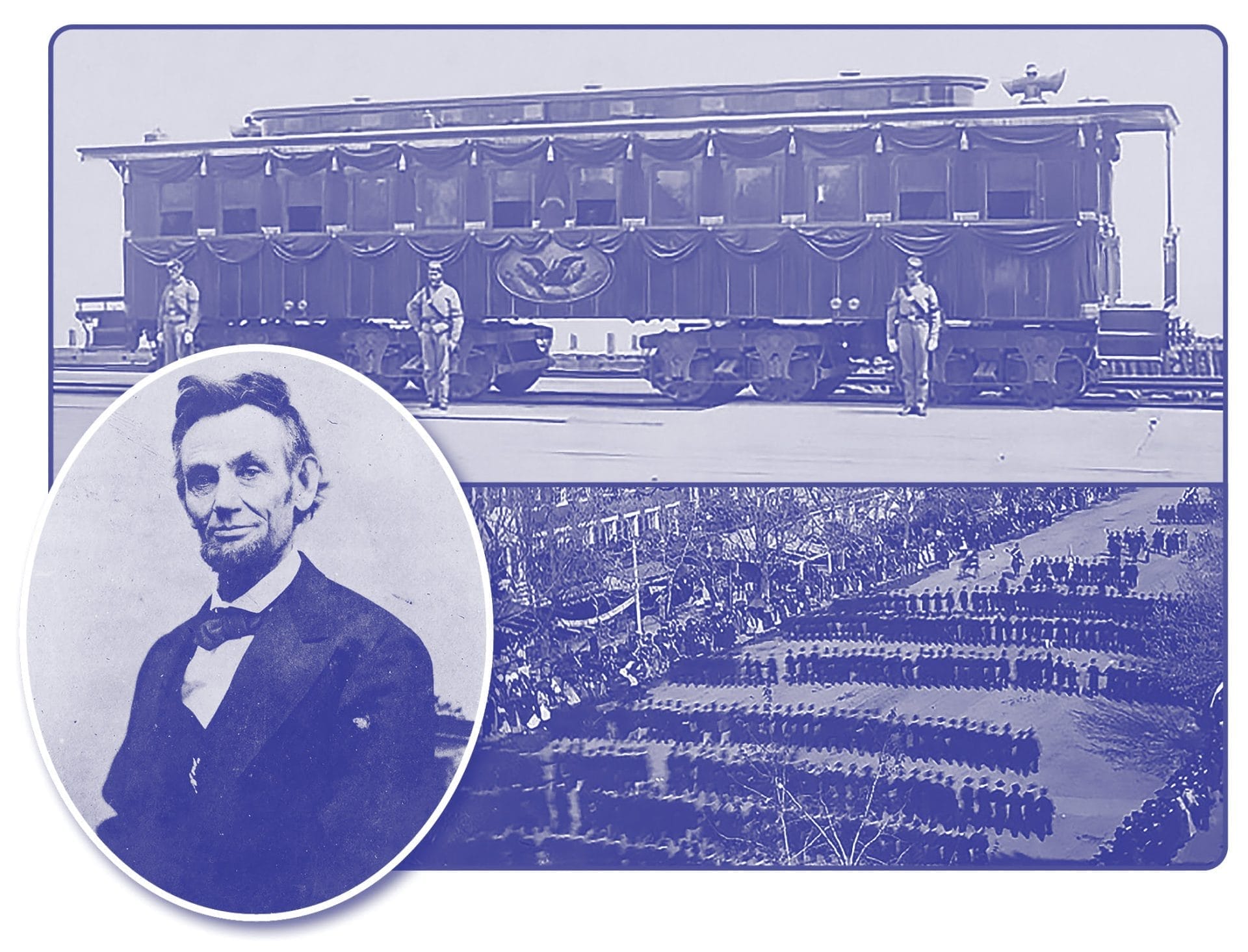
In February 1861, President-elect Abraham Lincoln traveled by train from Springfield, Illinois to Washington D.C. for his inauguration, according to Smithsonian Magazine. Lincoln’s train made numerous stops along the way, including the Poughkeepsie Train Station (POU) on Feb. 19, 1861. Following Lincoln’s assassination in 1865, the train carrying his body brought out tens of thousands of mourners along its route, which according to the National Railroad Museum passed through 180 cities in seven states. Stops included New York City, Poughkeepsie, Albany and Buffalo.
All Aboard
The all-consuming manner in which the railroad has shaped the lives of millions of Americans is reflected by the role this mode of transportation has played in numerous presidential administrations.
According to Union Pacific, which was founded on July 1, 1862, when President Abraham Lincoln signed the Pacific Railway Act, rail for nearly a century “was the most efficient way for Americans to travel long distances. From the 1840s through the 1940s, U.S. presidents used trains just like others did — to get from one place to another. While they traveled in grander style and attracted crowds along the way, presidents rode trains primarily because they were the most efficient way to travel, particularly over long distances.”
As expanding presidential duties hindered a commander-in-chief’s ability to embark on long journeys outside the capital, rail excursions plotted for maximum impact allowed a president to bypass the growing influence of the media and speak directly to constituents.
According to up.com, the enduring relationship between the White House and the railroad, which continues today with the 46th president of the United States, “Amtrak” Joe Biden, runs deep. Consider that:
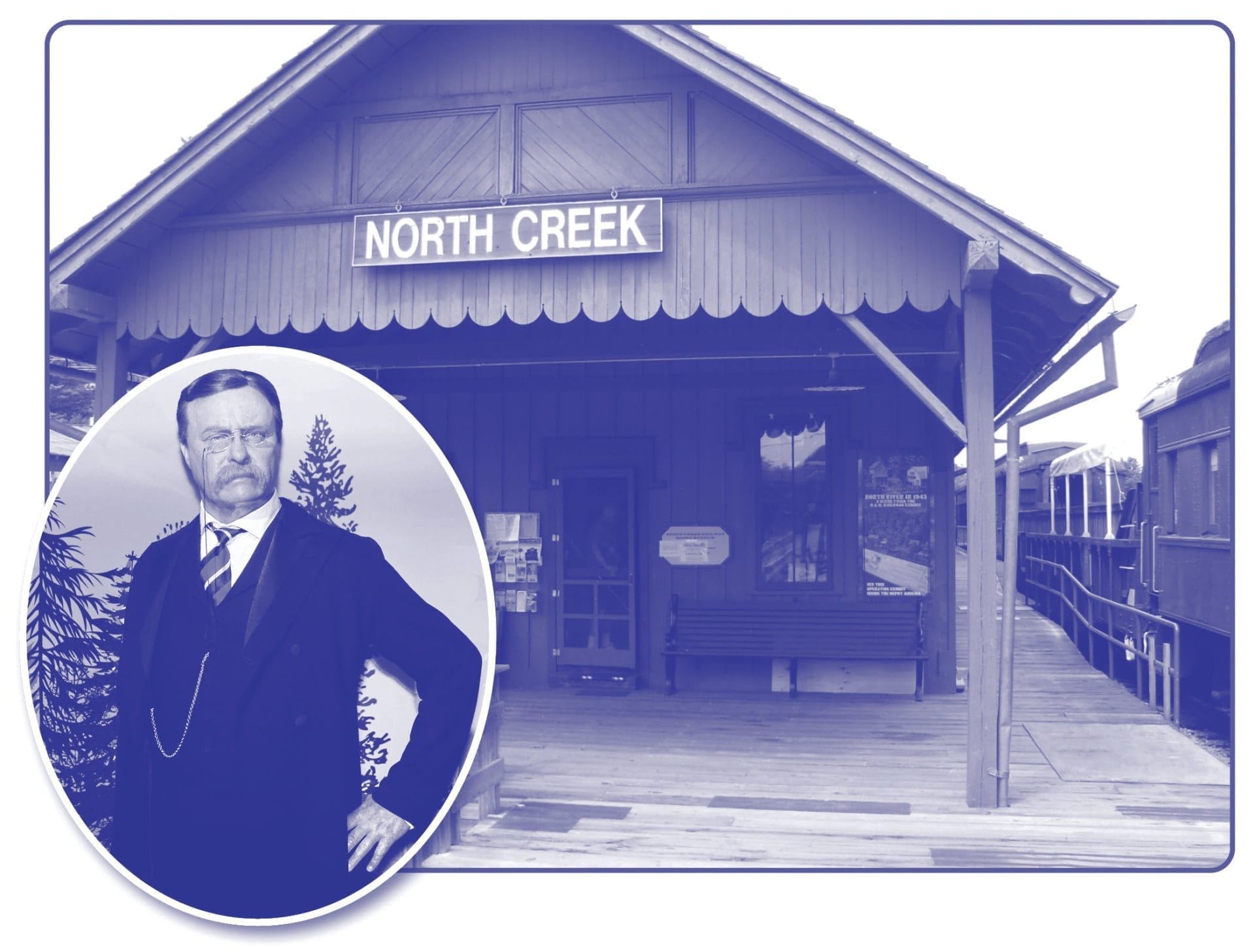
- Theodore Roosevelt was the first president to use a whole train for his campaign staff. He gave 673 speeches as he traversed more than 21,000 miles by rail. At times, he traveled in the locomotive cab and he learned how to operate a locomotive. North Creek, New York, about an hour west of the Fort Edward-Glens Falls Amtrak Station (FED), is home to the North Creek Depot Museum, which showcases the site where Vice President Theodore Roosevelt learned of President William McKinley’s death. From the depot, Roosevelt boarded a train to Buffalo, where he was sworn in as the nation’s 26th commander-in-chief.The Theodore Roosevelt Inaugural National Historic Site in Buffalo — a unit of the National Park Service — offers perspective on this historic occasion. The TR Inaugural Site, about two miles from Buffalo’s Amtrak Station, features historically-restored rooms, interactive exhibits and an extensive collection of artifacts and documents related to President Roosevelt, his inauguration and presidency, and the assassination of McKinley.
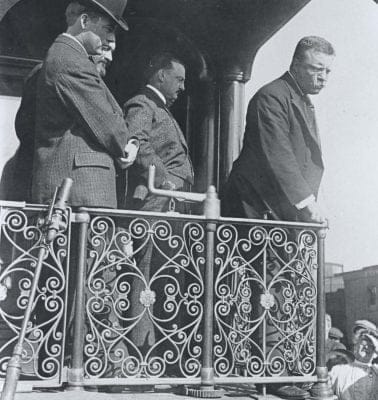
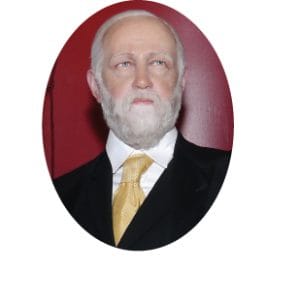
- President Benjamin Harrison traveled 10,000 miles by rail. The term POTUS — President of The United States — was coined during his administration as a symbol on the orders for his singular trains.
- The 1896 campaign between William McKinley and William Jennings Bryan was the first to be fought primarily by rail. Bryan logged 10,000 miles as he gave 3,000 speeches.
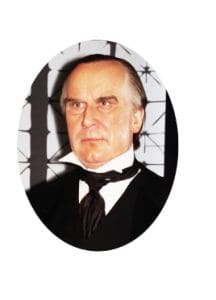
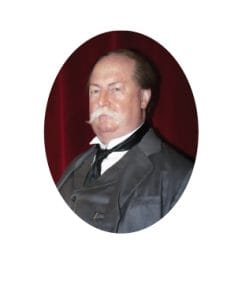
- President William Taft traveled more than 100,000 miles by rail while in office, reaching every continental U.S. state except North Dakota.
- In 1984, President Ronald Reagan traveled on the Ferdinand Magellan during a one-day whistle stop tour in Ohio that took him 133 miles from Dayton to Toledo.
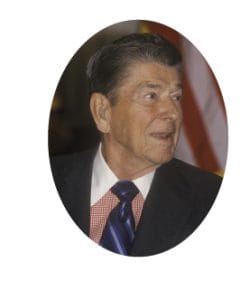
- According to the National Railroad Museum, President Harry Truman in September 1948 embarked on a 31,700-mile whistle-stop campaign tour on the Ferdinand Magellan. The journey was actually a series of back-to-back runs that crisscrossed the nation, missing only the Dakotas, the deep South, Maine, Vermont and New Hampshire. Speaking from the rear platform of the Ferdinand Magellan, Truman was greeted by crowds that were sometimes in excess of 20,000.
Amtrak Rider-in-Chief
All of this White House history brings us to President Joe Biden, whose career in public service, as a U.S. senator from Delaware and then vice-president culminated in November 2020 when he was elected the nation’s 46th commander-in-chief.
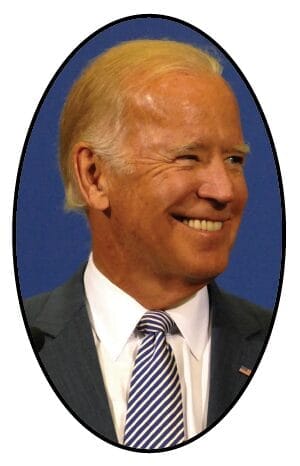
According to the Kawneer Company, which was involved in the two-year, $37.7 million renovation of the Wilmington Amtrak Station in Delaware, Biden during his nearly 40 years in the Senate rode Amtrak daily from the station that is now named in his honor. According to Amtrak, this stop is their 12th busiest station. And Biden, who according to the Washington Post estimates he has traveled more than 2 million miles aboard 16,000 Amtrak trains, believes rail travel in general and Amtrak in particular remain as relevant as ever.
“I love being on the train,” Biden said in September during a presidential campaign swing by rail through Ohio and Pennsylvania, according to the Associated Press.



